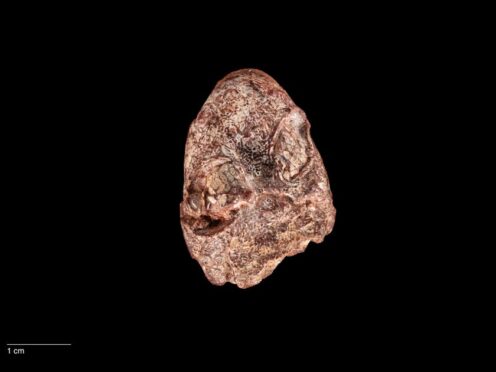
A newly discovered species of ancient amphibian ancestor that lived around 270 million years ago has been named after Kermit the Frog.
Scientists analysed the remains of an inch-long fossilised skull featuring large and oval-shaped eye sockets.
They named the prehistoric creature Kermitops gratus, after the bright green star of The Muppet Show created by American puppeteer Jim Henson.
Calvin So, a doctoral student at the George Washington University, said: “Using the name Kermit has significant implications for how we can bridge the science that is done by palaeontologists in museums to the general public.

“Because this animal is a distant relative of today’s amphibians, and Kermit is a modern-day amphibian icon, it was the perfect name for it.”
The specimen was first discovered four decades ago in an area in Texas, US, known as the Red Beds, but remained unexamined in the Smithsonian National Museum of Natural History’s fossil collection.
The fossil was finally picked up in 2021 by Dr Arjan Mann, a palaeontologist at the museum, who described it as a “really well-preserved, mostly prepared skull”.

Dr Mann and his protege, Mr So, identified the fossil as a temnospondyl, a diverse group of ancient amphibian relatives that lived between 360 to 200 million years ago.
These creatures are thought to be among the first true amphibians and represent a key evolutionary step in the transition of life from water to land.
Analysis of the skull revealed what the researchers describe as a “mishmash of traits” – different from features seen in the skulls of older tetrapods, the four ancestors of amphibians and other living vertebrates.
For example, they said, the region of the skull behind the Kermitops’s eyes was much shorter than its elongated, curved snout.

But the researchers believe that having these skull proportions – which likely resembled a stout salamander – would have helped Kermitops snap up tiny grub-like insects.
The early fossil record of amphibians and their ancestors is sparse, making it difficult to understand how frogs, salamanders and their relatives originated.
The researchers said that Kermitops offers clues to bridge this “huge fossil gap”.
Dr Mann said: “This is an active area of research that a lot more palaeontologists need to dive back into.
“Palaeontology is always more than just dinosaurs, and there are lots of cool evolutionary stories and mysteries still waiting to be answered.
“We just need to keep looking.”

Enjoy the convenience of having The Sunday Post delivered as a digital ePaper straight to your smartphone, tablet or computer.
Subscribe for only £5.49 a month and enjoy all the benefits of the printed paper as a digital replica.
Subscribe